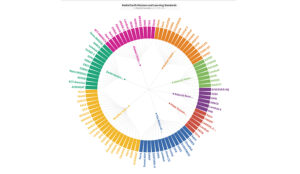From IBRRA:
Long-term monitoring of boreal forest ecosystems is required to implement sustainable forest management in an era of global change. Free and open access to analysis ready satellite image products (e.g., Landsat) provides a valuable data underpinning to reduce monetary and processing costs. Calibration and validation data from traditional sources such as field plots can also be supplemented by unique, but analogous measures, from airborne laser altimetry. The end goal of producing data products that support science, monitoring, and reporting activities is promoted, facilitating the flow of information from scientist to policy makers and the wider public. To support these aims, we have been using tens of thousands of Landsat images to characterize on an annual basis conditions and changes over Canada’s forests in a systematic and transparent fashion for the period from 1984 to present day. We are now poised to address many questions related to forest change, including both depletions (largely via fire and harvest) as well as recovery post disturbance (characterized using lidar). Information products developed from Landsat imagery are informative and relevant at a range of spatial scales, but with their 30 m spatial resolution, these products are capable of capturing anthropogenic impacts, which makes them particularly informative at management scales.

Undamming the Klamath
Between October 2023 and October 2024, the four dams of the Klamath Hydroelectric Project were taken down, opening more than 400 miles of salmon habitat.





